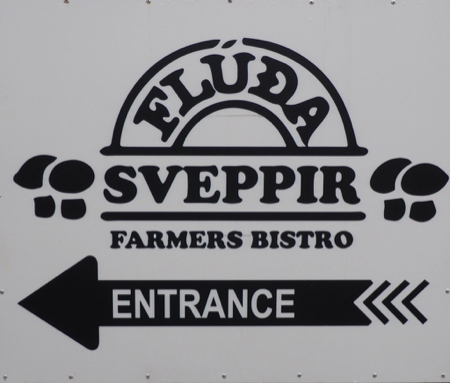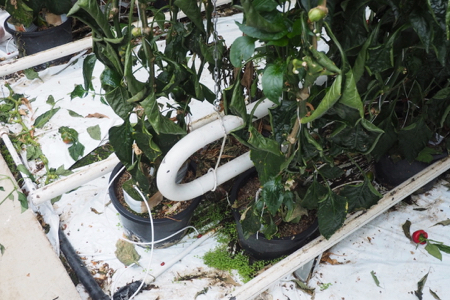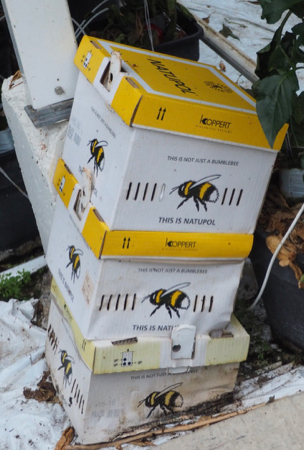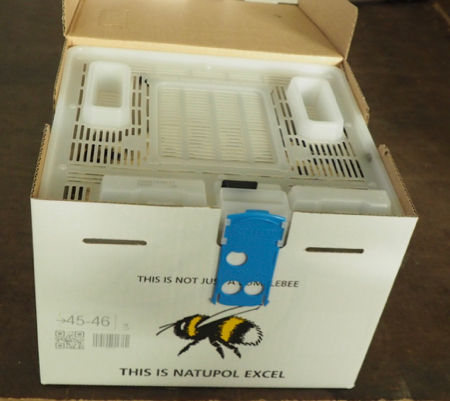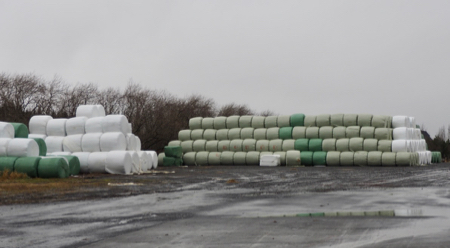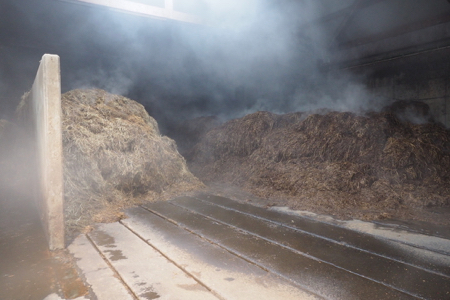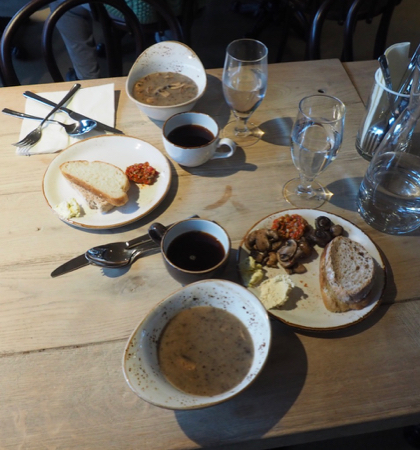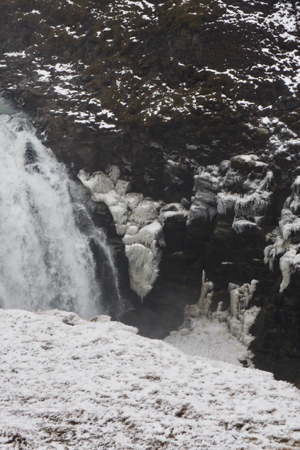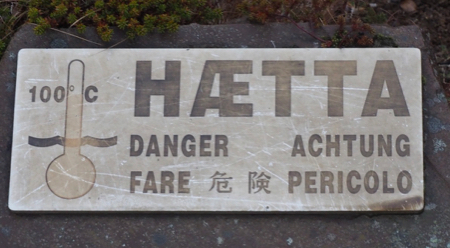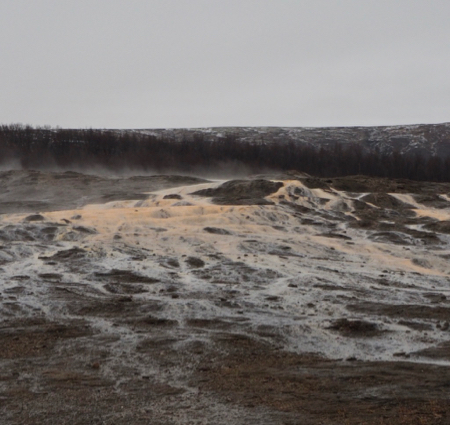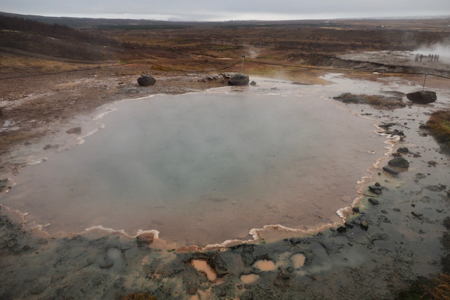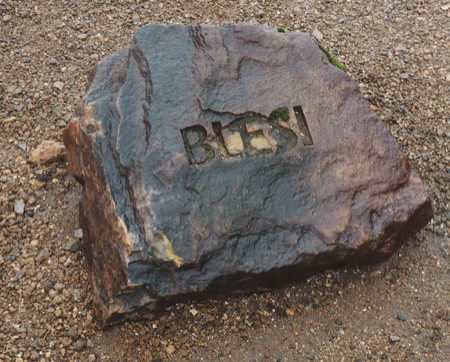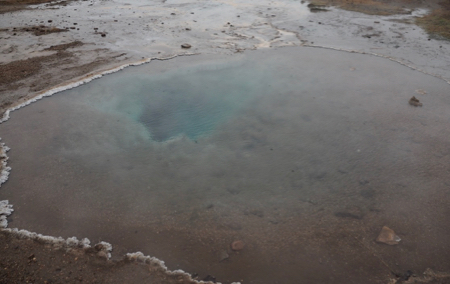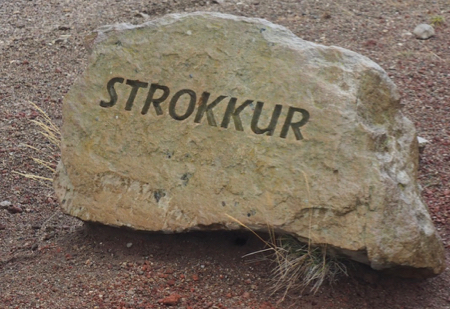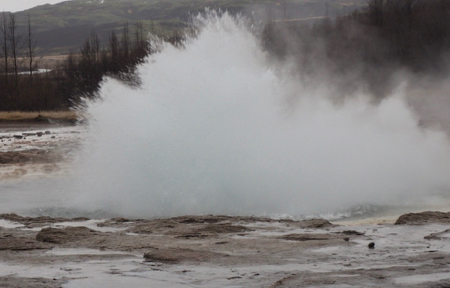Sat., 11/9 - Fludir, Geyser, Gullfoss, and the Secret Lagoon
This morning we visited a greenhouse operation, Flúðasveppir. Forty percent of the bell peppers and all of the mushrooms produced in Iceland are grown here - they do not export. Red, orange, and yellow varieties of peppers are grown and some are picked green before the last two to three weeks needed to turn colors. Seeds have to be imported from the Netherlands, as, according to Icelandic agricultural laws, they can’t use their own seeds. Seeds are started in the “nursery” and then the plants are moved to pots in the greenhouses. Bees are imported every three months to pollinate the flowers. This is a big operation.
The mushroom greenhouses are a different, complicated operation. Flúðasveppir produces all its own mushroom-growing medium from elephant grass and barley stalks mixed with water, calcium, and chicken dung, and then "ripened" to the correct temperature to grow the mushroom spores. The mushrooms grow on their threads in the soil on racks in sunless, but lit quonset huts. Picking the mushrooms and cutting the stems is arduous work that is mostly done by women. Three types of mushrooms are grown: Crimini, Button, and Portobello.
After the greenhouse tour, we ate an early lunch to sample the products. The mushroom soup was delicious! There was barley bread and sourdough and mushroom butter and red pepper butter, chutney, etc. It was great. Dessert was a carrot cake with butter cream topping.
Bell peppers on the vine
A beautiful red pair
Irrigation system
Bees are use for pollination
Bees in the box
Mushrooms growing in their special soil
Mushroom threads
Bales and bales of hay
Hay
Steaming mushroom-growing compost composed of elephant grass and barley stalks mixed with water, calcium, and chicken dung, and ripened to the correct temperature for growing the mushroom spores - it does NOT smell nice!
Wonderful lunch!
After lunch, we stopped in the cold, wind, and rain at the beautiful Gullfoss Falls. There are steps of falls and a lot of water dropping into a deep trench or channel. It is beautiful.
Gullfoss Falls
Gullfoss Falls
Next stop: the Geysir Hot Springs area. Geysir (the first geyser described in a printed source and the first known to modern Europeans) has not been active for 100 years but Strokkur geyser spouts up every 5 to 8 minutes. It is an interesting collection of bubbling pots and geysers, even in the rain.
Haetta hot springs
Konungshver pool
Blesi pool
Strokkur geyser erupting
Several of our group opted for a soak at the Secret Lagoon. We are not "hot tub" people so we just walked back, in the rain, to the hotel.
Tonight was our OAT “Home Hosted” dinner. Six of us ate at the home of the mother of the woman who gave us the greenhouse tour and who runs the mushroom soup cafe. She has a two-year-old daughter who entertained us when conversation was lagging. As we have found in many countries, our generation has trouble conversing in English and those younger than we are do very well. We ate a wonderful beef stew with mushrooms and carrots, new potatoes, and an interesting coleslaw with canned cocktail fruit in it. Dessert was chocolate pudding parfait. All very good!
Secret Lagoon
Desert and beverage
| Return to Top | Return to Itinerary | Return to Trips page to view other trips | Return to Dreamcatcher Home Page |
